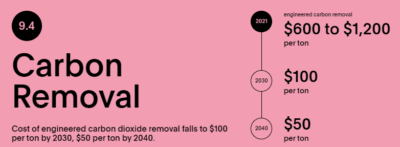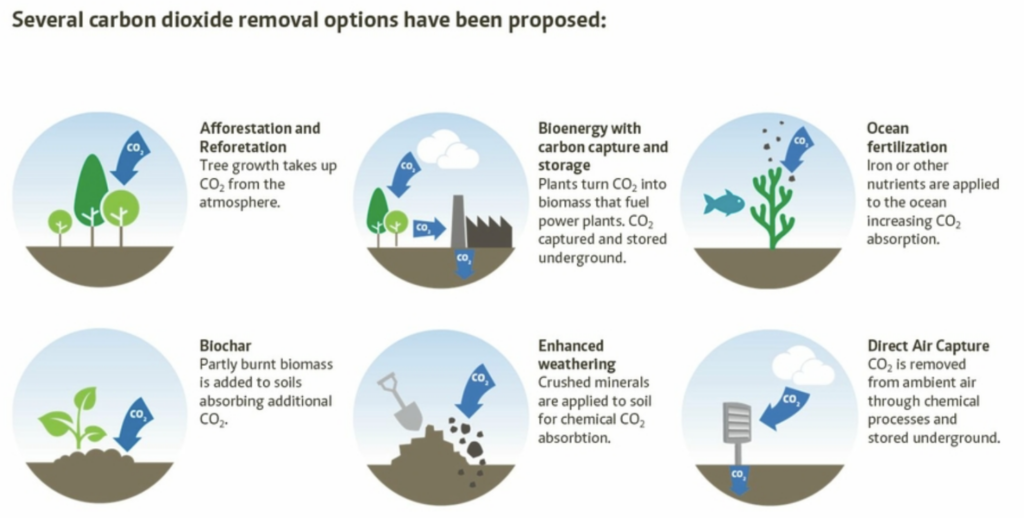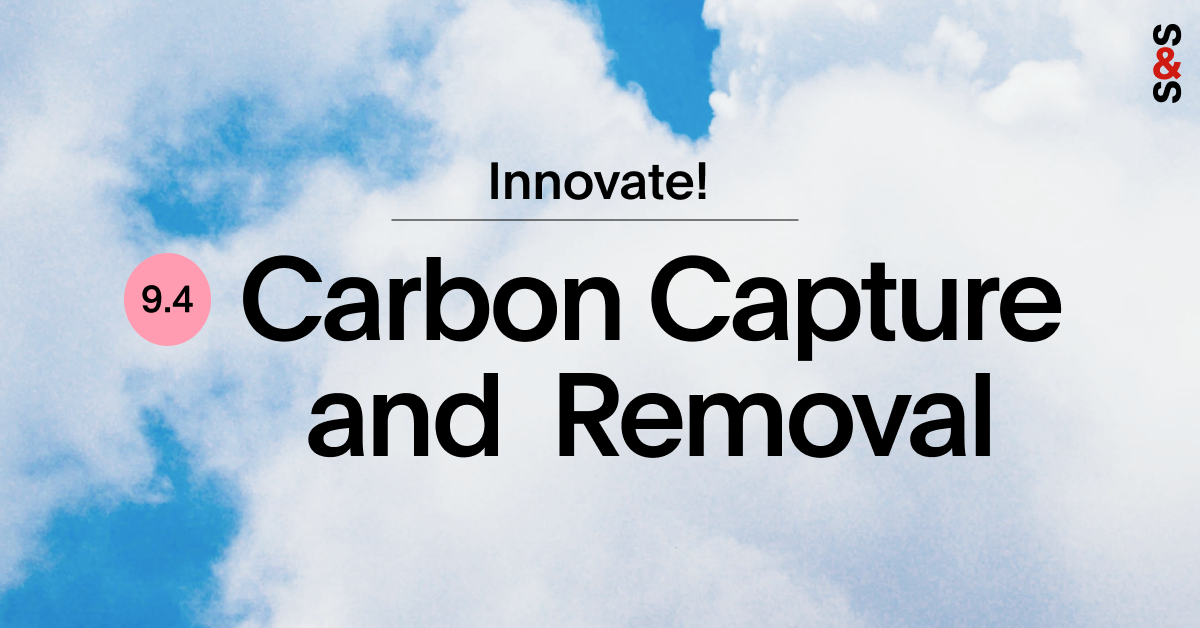Even after we reduce global emissions as much as we can, according to the Speed & Scale plan, we’ll still need to remove around 10 gigatons of leftover carbon from the atmosphere each year. We need innovation to capture CO2 at scale directly from the air, and then contain it for centuries.
The immediate challenge is to lower the cost of direct air capture to under $100 per ton by 2030 and to under $50 per ton by 2050. We’re currently lagging in our progress toward that target, but innovative efforts around the world can help us reach our short-term and longer-term goals.

While carbon removal has been around for some time, newer technologies–led by direct air capture–are adding to our toolkit. Governments around the world are investing in novel technologies to capture and remove carbon from our atmosphere more efficiently.
Types of carbon removal

(Source: Mercator Institute)
Nature-based removal initiatives include afforestation or reforestation, where forest ecosystems are created or restored to remove carbon dioxide from the air and store it via photosynthesis. Farmers and agriculture companies are also working to harness soil’s ability to sequester carbon through regenerative practices such as farming without tilling to minimize soil disturbance and growing plants among crops to provide them with cover.
Engineered carbon removal, on the other hand, refers to technologies that remove carbon dioxide. One notable example is direct air capture, the process of scrubbing CO2 from the atmosphere and storing it underground or in materials with long lifespans, such as concrete. Unlike carbon capture and storage technologies, direct air capture can remove excess carbon that’s already in the atmosphere, rather than capturing emissions at the source.
To accelerate investment in carbon removal, some private sector leaders are getting ahead of the game. Frontier, an advance market commitment founded by Stripe, Alphabet, McKinsey, and other major companies, aims to spur the development of these technologies by committing to buy an initial $1 billion in permanent carbon removal by 2023.
With more public and private organizations investing in innovation and supporting efforts to integrate carbon removal into our infrastructure, we can take a big step forward toward net zero.



